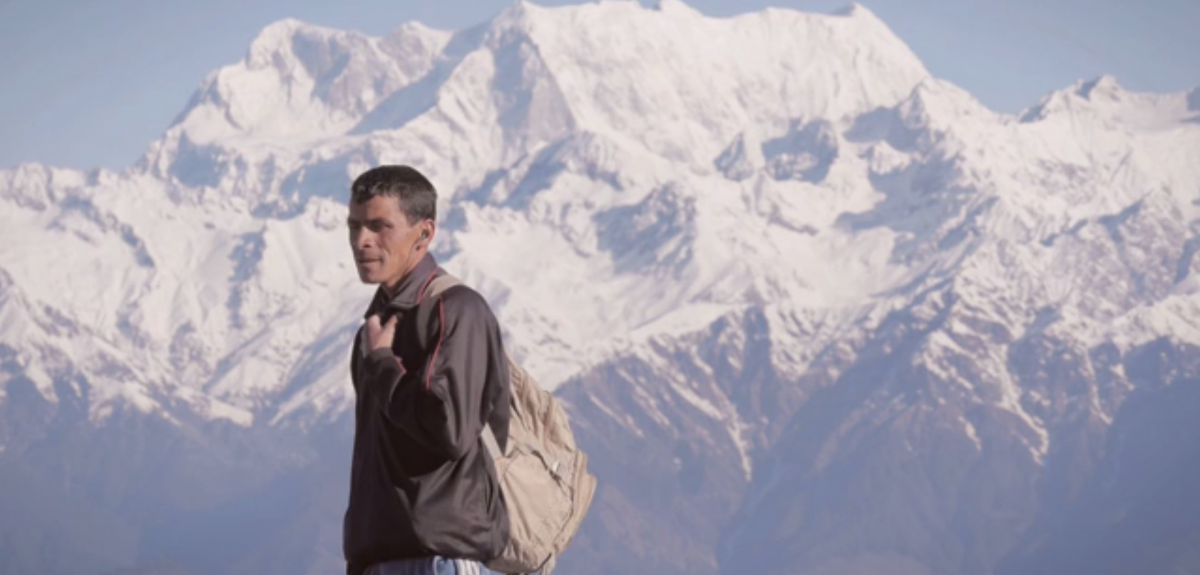
Film explores huge social shifts in the Indian Himalayas
Oxford social geographer Dr Jane Dyson took filmmaker Ross Harrison to a village 2500m high in the Indian Himalayans to chart some of the significant social changes taking place. The result is a 15-minute film titled Lifelines [scroll to bottom to watch] about the hopes and frustrations of the villagers in the state of Uttarakhand.
It is a place of great beauty, known as Land of the Gods because it lies in the shadow of the towering Himalayan peaks where some of the great Hindu deities originate. However, it is also one of India's poorest states, with low levels of urbanisation and a mainly agricultural economy. The village sits high on a ridge in Chamoli District, not far from the border with Tibet. Life under the towering peaks of Nanda Devi (7816m) and Trishul (7120m) is one of hard agricultural labour. Villagers move seasonally between three settlements at different altitudes, ranging from 2200m to 2800m.
Since Jane's first visit in 2003, life has changed. Then, it took half a day to trek to, and there was no power or telecommunications. Only the first five years of primary education were provided for in the village. By 2012, the village had a telecommunications tower, irregular electricity and a road (of sorts), while many people used mobile phones. It is now relatively straightforward for young people to obtain education up to high school level.
The film focuses on Makar Singh, a father with three young children who is completing a master’s degree by correspondence. He, like many of the youth, finds ways to channel his frustration with the lack of opportunity.
In the film, he explains: 'We have very few earning sources here. There are no companies, no factories. If the government creates a post, it will be for three or four people, but more than 1,000 of us apply. Everywhere there is competition. The competition is so high. Even if you're qualified you won't get selected. You could open a small shop but nothing more because there isn't the market. There aren't enough jobs for everyone, so there’s lots of unemployment.'
But it is also a film about hope. Following community protests, the government built a road and provided electricity and a school for the village, so levels of literacy have risen to almost 100% for people aged below 40. Ten years ago, the literacy level was nearer 20%. Makar Singh hopes these changes will provide a brighter future for the next generation.
Jane has worked in the village for over a decade. Her doctoral research in the village focused on children’s work and is published by Cambridge University Press in her book Working Childhoods: Youth, Agency and the Environment in India.
The work was conducted from the School of Geography and the Environment with funding from the UK Economic and Social Research Council.